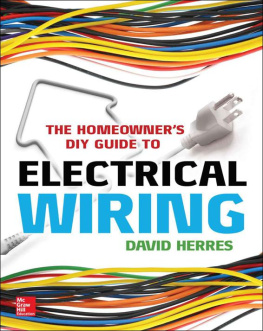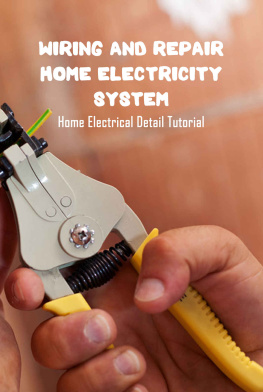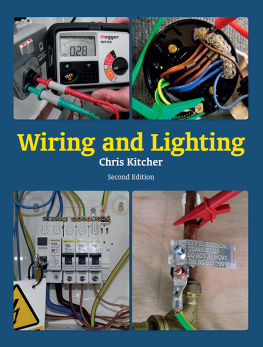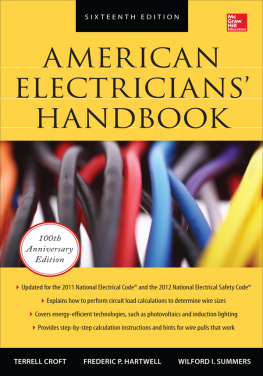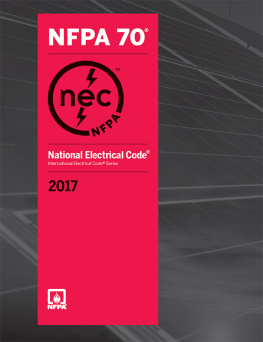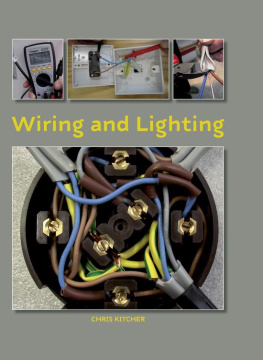Copyright 2015 by McGraw-Hill Education. All rights reserved. Except as permitted under the United States Copyright Act of 1976, no part of this publication may be reproduced or distributed in any form or by any means, or stored in a database or retrieval system, without the prior written permission of the publisher.
ISBN: 978-0-07-184473-4
MHID: 0-07-184473-2
The material in this eBook also appears in the print version of this title: ISBN: 978-0-07-184475-8, MHID: 0-07-184475-9.
eBook conversion by codeMantra
Version 1.0
All trademarks are trademarks of their respective owners. Rather than put a trademark symbol after every occurrence of a trademarked name, we use names in an editorial fashion only, and to the benefit of the trademark owner, with no intention of infringement of the trademark. Where such designations appear in this book, they have been printed with initial caps.
McGraw-Hill Education eBooks are available at special quantity discounts to use as premiums and sales promotions, or for use in corporate training programs. To contact a representative please visit the Contact Us page at www.mhprofessional.com.
Information contained in this work has been obtained by McGraw-Hill Education from sources believed to be reliable. However, neither McGraw-Hill Education nor its authors guarantee the accuracy or completeness of any information published herein, and neither McGraw-Hill Education nor its authors shall be responsible for any errors, omissions, or damages arising out of use of this information. This work is published with the understanding that McGraw-Hill Education and its authors are supplying information but are not attempting to render engineering or other professional services. If such services are required, the assistance of an appropriate professional should be sought.
TERMS OF USE
This is a copyrighted work and McGraw-Hill Education and its licensors reserve all rights in and to the work. Use of this work is subject to these terms. Except as permitted under the Copyright Act of 1976 and the right to store and retrieve one copy of the work, you may not decompile, disassemble, reverse engineer, reproduce, modify, create derivative works based upon, transmit, distribute, disseminate, sell, publish or sublicense the work or any part of it without McGraw-Hill Educations prior consent. You may use the work for your own noncommercial and personal use; any other use of the work is strictly prohibited. Your right to use the work may be terminated if you fail to comply with these terms.
THE WORK IS PROVIDED AS IS. McGRAW-HILL EDUCATION AND ITS LICENSORS MAKE NO GUARANTEES OR WARRANTIES AS TO THE ACCURACY, ADEQUACY OR COMPLETENESS OF OR RESULTS TO BE OBTAINED FROM USING THE WORK, INCLUDING ANY INFORMATION THAT CAN BE ACCESSED THROUGH THE WORK VIA HYPERLINK OR OTHERWISE, AND EXPRESSLY DISCLAIM ANY WARRANTY, EXPRESS OR IMPLIED, INCLUDING BUT NOT LIMITED TO IMPLIED WARRANTIES OF MERCHANTABILITY OR FITNESS FOR A PARTICULAR PURPOSE. McGraw-Hill Education and its licensors do not warrant or guarantee that the functions contained in the work will meet your requirements or that its operation will be uninterrupted or error free. Neither McGraw-Hill Education nor its licensors shall be liable to you or anyone else for any inaccuracy, error or omission, regardless of cause, in the work or for any damages resulting therefrom. McGraw-Hill Education has no responsibility for the content of any information accessed through the work. Under no circumstances shall McGraw-Hill Education and/or its licensors be liable for any indirect, incidental, special, punitive, consequential or similar damages that result from the use of or inability to use the work, even if any of them has been advised of the possibility of such damages. This limitation of liability shall apply to any claim or cause whatsoever whether such claim or cause arises in contract, tort or otherwise.
About the Author
David Herres, Master Electrician, is the owner and operator of a residential and commercial construction company. He is the author of 2011 National Electrical CodeChapter-by-Chapter, Troubleshooting and Repairing Commercial Electrical Equipment, and The Electricians Trade Demystified, all published by McGraw-Hill Education. Mr. Herres has written more than 150 articles for construction and electronics magazines, including Electrical Construction and Maintenance, Cabling Business, Nuts and Volts, Solar Connection, Fine Homebuilding, and others.

Contents

Acknowledgments
I wish to thank all those at McGraw-Hill Education whose diligent work in producing this book helped to make it a reality. Thanks to Roger Stewart, my editor in San Francisco, who was with the project from start to finish, and to Judy Bass, in New York, who provided initial inspiration and guidance. Their colleague, Amy Stonebraker, brings new meaning to the word competence.
David Herres

Introduction: Why Do Your Own Wiring?
F or a long time, the best advice seemed to be hire a professional and get it done right. Depending on the task contemplated and the individuals level of expertise, this notion may or may not be valid. You have to assess the situation and decide what will work for you. Even if you hire out all the work, electrical knowledge and expertise, as conveyed in this book, will be of value in completing your building project and maintaining it in the future.
The Homeowners Role Is Expanding
It is a fact that nowadays homeowners are far more active in their construction projects, whether new building or remodeling. If professionals are hired, the owners still may play a prominent role in planning and moving forward with the job. Often the homeowner is the builder. In some cases, though, a professional is hired as a designer-advisor and, in jurisdictions where there is oversight, interfaces with the inspector and, if necessary, signs off on the job.
All of this is especially true in the area of electrical work. Some home crafters draw a line in the sawdust, avoiding electrical work altogether. Others set the boxes, drill studs, and pull cable, leaving all terminations to the electrician. The extreme case is to do everything including the service without hiring a professional at all. This approach will maximize the monetary savings for the homeowner, and of course there is immense satisfaction in doing it all. If this is too great a leap into the unknown at this time, it might be something to aim for down the road.
Electrical work is very exacting and presupposes accurate knowledge (on an open-book basis) of the National Electrical Code (NEC). This document is applicable in the United States, Mexico, Venezuela, and certain other countries. In Canada, it is the Canadian Electrical Code (CEC), and in Europe it is the International Electrotechnical Commission (IEC). Australia and New Zealand recognize the Australian/New Zealand Standard for Wiring Rules

